Ordination Best Practices for Ministers, Elders and Deacons
Because so many people search our website for ordination resources, we consulted five experts from five denominations. Their best practices will help you dig beneath the surface when you ordain or install ministers, elders and deacons.
Gertrude Stein may have been right that “a rose is a rose is a rose.” But anyone who looks into Protestant ordination practices will learn that being a Presbyterian deacon is very different from being a Methodist or Anglican deacon.
The following entries are edited from experts’ written or spoken responses to questions about ordination theology, polity, history, venues, key elements and creative options. You’ll also find links to sample ordination and installation services.
Click on photos to read responses.
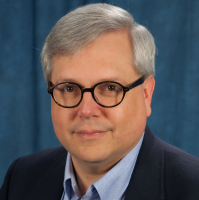 |
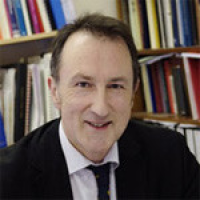 |
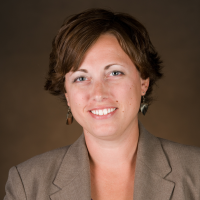 |
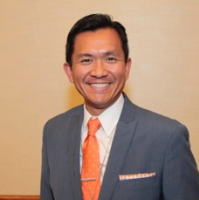 |
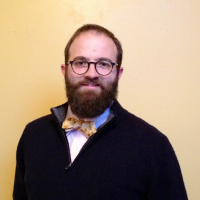 |
Taylor Burton-Edwards: Director of worship resources, Discipleship Ministries, The United Methodist Church (UMC); Consultation on Common Texts chair; ordained elder and clergy member in the Indiana Conference of the UMC; UMC Discipleship Ministries: Nashville, Tennessee
Theology/Polity: “Ordination is the work of the Holy Spirit through the church for the setting apart of certain persons to lead the whole church—not just a single congregation—in faithfully fulfilling the vows of the baptismal covenant,” Burton-Edwards says. The UMC ordains both women and men to lifetime ministries as elders (word, sacrament, order and service) and deacons (word, sacrament, compassion and justice).
The UMC worldwide is organized as congregations within districts, within annual conferences—the basic unit of polity. Congregations do not call pastors or vote on elders and deacons. Instead, bishops ordain elders and deacons and appoint where they will serve. Bishops are experienced elders who have been consecrated to oversee episcopal areas of one or two annual conferences.
About 80 percent of UMC congregations in the USA are headed by an ordained elder, and 20 percent by non-ordained local pastors. Most ordained elders serve as senior or staff pastors in congregational ministry. Others serve in extension ministries in various settings.
“Ordained deacons function as a bridge between congregational life and the community. Often, their primary appointments are outside a congregation. They extend the witness and service of Christ’s love and justice in the world and connect the church with the most needy, neglected and marginalized. Deacons’ liturgical roles include reading the gospel, leading the intercessions and confession of sins, and presiding at weddings and funerals,” Burton-Edwards says.
Becoming an ordained elder or deacon is usually a years-long sequence of discerning, testing and building relationships at congregational, district and annual conference levels. Candidates must be approved by a district committee. To be ordained, they must complete the educational requirements for their order in an approved seminary. Deacon candidates must complete basic graduate theological studies, and elder candidates must complete an M.Div. The annual conference commissions elder and deacon candidates to serve provisionally for two or three years before being ordained and becoming full members of the annual conference.
Who, How, Where: Elders and deacons are ordained by the bishop during a worship service at the annual conference meeting, which usually happens between late May and early July. At the same service, others may be commissioned as provisional conference members, being recognized as associate conference members or received as ordained clergy from other denominations considered to be legitimate.
Key Elements: “It is important to see ordination as an initiation, not a graduation or completion. Becoming ordained means you are now beginning a lifelong journey of living out your baptismal covenant in a circumscribed way. You are empowered by the Holy Spirit to do this for the rest of your life. Also, the ordination service isn’t about what we like or prefer. It’s about what is. We have an ordinal required to be used everywhere for ordinations, commissioning services and the recognition of persons with orders from elsewhere. It’s called Services for the Ordering of Ministry in The United Methodist Church, 2017-2020 and contains rubrics for who does what and who wears what,” Burton-Edwards says.
“As director of worship resources, I chair the team that edits the traditional service and has now created a new alternative service. Thoroughly vetting this service took eight years. Conferences may start using it in 2017. The alternative ordinal includes more opportunities for participation by the congregation. There are scriptures or songs you may choose from an approved list. But, whether they use the traditional or new alternative service, or elements from each, bishops must use the prescribed words for the vows. The service itself—what is said and done integral to ordination—is not to be altered.
“Only the bishop lays hands on a candidate’s head. A mentor or another clergy member may lay hands on the candidate’s arms or back. Family members may stand in silent prayer in their designated seating area. Both services begin with a recognition of our common ministry as Christians and a reaffirmation of our baptismal vows. The alternative version adds a reaffirmation of vows of professing membership as well,” he says.
Learn More: Check out this glossary of UMC candidacy terms; Taylor Burton-Edwards’ blog series on ordination; and Services for the Ordering of Ministry in The United Methodist Church, 2017-2020. Taylor Burton-Edwards recommends worship consultant Marcia McFee for help in planning ordination services.
 Norman Doe: barrister; law professor; supervisor of the world’s only post-Reformation degree in canon law; non-ordained Anglican Cardiff University Law School: Cardiff, Wales, UK
Norman Doe: barrister; law professor; supervisor of the world’s only post-Reformation degree in canon law; non-ordained Anglican Cardiff University Law School: Cardiff, Wales, UK
Theology/Polity: The Church of England is organized into parishes within dioceses, within two provinces. It ordains men and women as bishops, priests and deacons. Deacons assist the parish priest in liturgical, teaching and pastoral work, and they do outreach to build bridges with the local community. One must serve as a deacon before becoming ordained as a priest.
“For Anglicanism, the holy orders are bishops, priests and deacons and this ‘threefold ordained ministry accords with the practice and tradition of the church’. No person is to be a priest or deacon unless called, tried, examined and admitted according to the rite of ordination, and the diocesan bishop has a special responsibility, assisted by the faithful, to provide sufficient priests and deacons and to foster vocations to ordained ministry; the normal age for the diaconate is 23 and that for the priesthood is 24.
“There is no right to ordination: baptism and confirmation are necessary qualifications and the authority to determine suitability of a candidate rests with the bishop, who must be satisfied the candidate has the necessary spiritual, moral, physical and mental qualities – both men and women may be ordained to the extent permitted by law. A candidate must assent to church doctrine, to use only lawful forms of service, to obey the lawful and honest directions of the bishop, and to comply with the law. Progression from diaconate to priesthood is not automatic: normally a deacon may not be ordained priest for at least one year, unless the bishop has good cause to ordain earlier; laws provide for training and for the production of prescribed documents prior to ordination.
“The ordination must be in accordance with the ordinal or other authorised form of service, and it must be administered episcopally under the authority of the diocesan bishop. Valid ordination consists in fulfilment of what the church universal intends with the free consent of the candidate through the imposition of hands by a validly consecrated bishop with the invocation of the Holy Spirit to give grace for the work of a priest or deacon, whichever particular order is bestowed. Ordination cannot be repeated; orders are indelible.”
—Excerpted (minus footnotes) from Norman Doe’s book Christian Law: Contemporary Principles (Cambridge University Press, 2013) 79-80.
Who, How, Where: Ordinations occur in the diocesan cathedral at a service attended by clergy and people. The diocesan bishop ordains and follows the ordinal [authorized form of service]. Bishops must be ordained by at least three other bishops, joining together in the act of ordination, of whom one shall be the archbishop of the province, or his deputy.
Key Elements: Ordinations must include the bishop’s charge to ordinands; their agreement to undertake that charge; and the laying on of hands.
Learn More: Church Words defines archdeacons, deaneries, rectors, vicars and other Anglican terms. Call Waiting and Church of England Vocation outline paths to ordained and lay ministries.
 Rachel G. Hackenberg: Minister for the United Church of Christ (UCC) committee on ministry resources and conference support; ordained UCC minister UCC headquarters: Cleveland, Ohio
Rachel G. Hackenberg: Minister for the United Church of Christ (UCC) committee on ministry resources and conference support; ordained UCC minister UCC headquarters: Cleveland, Ohio
Theology/Polity: The United Church of Christ (UCC) was formed through several mergers and is committed to “in essentials unity, in non-essentials diversity, in all things charity.” It ordains both men and women as ministers, and ordination is one of three forms of authorized ministry. Most of the UCC is divided into regional conferences made up of associations of local congregations. Each association has a committee on ministry (COM) that oversees the path to ordination, which usually, but not always, involves a college or seminary degree. The association ordains in partnership with the recommending congregation.
Rachel Hackenberg explains, “The UCC does not have one single tradition or theology of ordination. Our denomination is a conglomeration of church histories and faith perspectives. Though my thoughts on ordination and installation are personally and professionally rooted in United Church of Christ identity, I cannot speak for all of the UCC’s diverse practices and theologies.
“Like many global ecumenical bodies, the UCC affirms the priesthood of all believers and the setting apart of some individuals by ordination through the laying on of hands. Our UCC Manual on Ministry does not prescribe a single theological understanding of ordination. Our clergy, if asked, will variously articulate their theology and personal experience of ordination as: an ontological coming-into-being; an epiclesis of sorts; a miracle enacted by the gathered body of Christ; or a symbolic ‘hoop’ required to affirm an individual’s authority in ministry.
“However, the theological undergirding of installation is more widely shared across the UCC. Installations embody our covenantal relationships and UCC covenantal polity, rooted in the grace and gospel of Christ. Our varied installation practices are most often understood as liturgical affirmations of the interdependent relationships between a minister, a minister setting (such as a congregation) and the wider denomination, as represented by the middle judicatory (associations). We highlight the supporting polity of installations in our UCC Book of Worship as a liturgical celebration.”
History: “Although I assign great value and deep humility to the understanding of apostolic succession, not all UCC clergy celebrate and claim this understanding. Nor would all ecumenical bodies affirm the place of UCC clergy within this succession. However, I believe that ordination and installation affirm the clergy’s historic and holy burden for the well-being and continuation of the body of Christ. I’m particularly fond of this acclamation in the UCC ordination liturgy: after the promises of the ordinand and before the laying on of hands, the gathered body of Christ is asked whether to ordain the individual. ‘By the grace of God, she is worthy!’ the people exclaim. ‘Let us ordain her. Come, Holy Spirit.’ That vocal affirmation of the body for the individual’s ordination is essential,” Hackenberg says.
Who, How, Where: Ministerial candidates must receive and accept a call before they become ordained. Ordinations and installations often take place at a time other than Sunday morning, so that people from other churches may participate. Associations, conferences or COMs—not local churches—most often plan the services. Installation services happen in the congregation to which the minister is called. Sometimes ordination and installation happen in the same service.
“I was ordained in the UCC congregation where I grew up and which supported my path into ordained ministry. I am one of only two women who have been ordained in that (formerly German Reformed) congregation, and the first ‘daughter of the church’ to be ordained there. I will always be grateful for the church member, a farmer, who once said to me, ‘Well, I don’t know about ordaining women, but I do know that you can preach.’ I was blessed that many of my mentors helped lead worship in my ordination service. Following the moment of ordination, I presided over communion, as many ordinands do for the first time. I will always remember approaching that high table, with its pressed white table cloth and polished silver communion trays, to officiate a beloved sacrament,” Hackenberg says.
Key Elements: “During ordination services, some UCC associations call for clergy only to participate in the laying on of hands. Others invite clergy first and then all laity. Some invite all persons at the same time. If we take seriously the priesthood of all believers, I believe it’s important to include both clergy and laity in the act of ordination, not only as a witness to the power of God within us all to bless one another, but also as a reminder that a minister’s work is among and on behalf of us all
“Laying on of hands is practiced less consistently in UCC installation services, although there is a creative opportunity to ‘reverse’ the laying on—where the minister is blessed by the people and then the people are blessed by one another.
“I’ve observed that many ordinations and installations depend too much on the traditional ‘sit and listen’ worship framework. Since ordinations and installations are liturgical acts on behalf of Christ’s body—and made holy through them—I welcome more ways to participate than singing and laying on of hands. Simple creative practices can highlight all believers’ priesthood and participation. You can pass a stole through the pews for each person’s touch and prayer before gifting it to the minister…or invite the youngest and oldest generations to gather first for laying on of hands…or delegate the official words to many voices,” she says.
Learn More: Adapt these sample UCC ordination and installation services. The UCC describes its ethos as covenantal.
 Neal D. Presa: associate pastor; adjunct assistant professor of worship at Fuller Theological Seminary; author and editor Village Community Presbyterian Church: Rancho Sante Fe, California
Neal D. Presa: associate pastor; adjunct assistant professor of worship at Fuller Theological Seminary; author and editor Village Community Presbyterian Church: Rancho Sante Fe, California
Theology/Polity: The Presbyterian Church (USA) is organized into regional presbyteries of congregations governed by a local session (church decision-making council). A group of presbyteries in a geographical region form a synod. A presbytery ordains women and men as teaching elders (ministers of word and sacrament). Local sessions ordain ruling elders and deacons who have been elected by the local congregation. Deacons lead congregations in compassion and justice ministries. Ruling elders are ordained for life and continue as spiritual leaders even when they’re not actively serving a term on the session. Becoming ordained as a minister of word and sacrament is a lengthy process involving inquiry, study (usually at a seminary), candidacy, being certified by a presbytery as ready to be examined for ordination and passing those exams.
“The Book of Occasional Services, a companion volume to the Presbyterian Church (USA)’s The Book of Common Worship, has a liturgy for ordination and installation. This liturgy expresses a Presbyterian/Reformed theology of ordination and installation grounded in baptism, framed by Christ’s call upon the church to serve in worship and mission, and scaffolded by the edifying work of the Holy Spirit. The Holy Spirit forms and propels the community, from which certain persons are designated to equip the community for ministry. In short, ordination and installation are acts of worship: the community is responding faithfully to the triune God’s call to serve the gospel of Jesus Christ,” Presa says.
“The Book of Order (book 2 of the PCUSA constitution), in keeping with Reformed theological and polity traditions, underscores the constitutive role of church councils to discern the will and mind of God for a community. In both cases, councils—sessions for deacons and ruling elders and regional presbyteries for teaching elders—prayerfully determine fitness for ordination/installation, how and whether one’s sense of calling syncs with the community’s sense of that calling, and whether candidates’ faith and ministry commitments align with Reformed theological traditions,” he says.
History: “My favorite historical practice for ordinations and installations is the laying on of hands. We first encounter this ancient practice in the Old Testament book of Numbers, where God, through Moses, instructs the sons of Israel to lay hands upon the Levites ordained and installed into tabernacle priesthood.
“It is remarkably powerful to see those who were previously ordained laying hands upon those candidates who will be ordained/installed. In this act, the gathered assembly, through its leaders, symbolically expresses several things at once: the assembly invokes and confirms the Holy Spirit’s anointing upon the candidate; the assembly blesses and supports the candidate; the assembly joins in continuity with the one holy catholic apostolic Church in all times and in every place when God’s people similarly set apart persons among the community to serve and lead that same community,” he says.
Who, How, Where: “Representatives of the council of jurisdiction must be present for a bona fide ordination in the Presbyterian/Reformed tradition. That is because the appropriate council is responsible for the service and presents the candidate for ordination. It is understood that the council of jurisdiction acts on behalf of the whole church, even as that particular council is, in and of itself, not the whole church. Thus, the local session ordains/installs deacons and ruling elders in the church where they will serve. The regional presbytery ordains/installs teaching elders in the sanctuary of the congregation that guided, shepherded and nurtured the candidate through the ministry preparation process. But we go beyond that minimal condition of representation, because we understand ordination/installation as a communal act in which love and support extends beyond the council to involve the candidate’s family, friends, mentors and ministry colleagues.
“My ordination service occurred in the sanctuary of my home church. I recall the Presbytery of San Francisco commission processing down the aisle, surrounded by about 250 church members, family, friends and presbytery representatives. Communion trays and a generous amount of bread filled the chancel. Most impactful for me was what people did and said in presenting the symbols of ministry. When my parents and parents-in-law presented and placed the black Geneva gown around me, along with a blue stole, I felt like the grace of God was clothing me at that moment. A pastor colleague presented a pectoral cross, which I still wear as a reminder of that day. And, in a funny moment fitting to my Filipino American/Pacific Islander heritage, another pastor colleague presented me with a pair of beach trunks. He told me to remember that underneath the clerical garb and office, I was a Pacific guy, loved by God in Jesus Christ, and always in need of the Lord’s mercy and grace,” Presa says.
Key Elements: “Because ordination is a specification of one’s baptism, and because the ordinand is being set apart from the community of the baptized, every ordination service should visibly express baptism and audibly enable the whole community to hear and reaffirm the baptismal covenant. Someone can pour generous amounts of water into a centrally placed font. The presider or council representatives can dip their hands into the baptismal water and sign the cross on their foreheads. They can asperges [sprinkle] water upon the gathered assembly and proclaim, ‘Remember your baptism and the Lord’s calling.’
“As an ecumenist, I enjoy researching, attending, and reflecting upon ordinations and analyzing ordination liturgies across an ecclesial spectrum of Anglican/Episcopalian, Lutheran, Methodist, Southern Baptist, Roman Catholic, Eastern Orthodox and non-denominational settings. I like the Roman Catholic tradition of having the priest ordinand kneel in front of the gathered assembly, while the bishop places an open Bible upon the ordinand’s head. In the Presbyterian/Reformed tradition, a similar act can be done before, during or after the laying on of hands. This powerful act would remind ordinands that they live and serve under the Word of God. Lastly, because ordination sets apart persons in order to equip the baptized community for living out its vocation, ordinations should include the Eucharist. Celebrating the Eucharist symbolizes how God nourishes and sustains God’s people. Especially in ordinations, the eucharistic feast should be joyous, with lots of music, bread and wine or juice, and singing and dancing in the aisles,” he says.
Learn More: See a sample PCUSA service for ordaining/installing a teaching elder (aka minister of word and sacrament). Read Here, I Am, Lord, Send Me: Ritual and Narrative for a Theology of Presbyteral Ordination in the Reformed Tradition by Neal D. Presa (Resource Publications/Wipf & Stock, 2012).

Theology/Polity: The Reformed Church in America is divided into regional synods made up of classes (plural of classis) of congregations. It ordains men and women as ministers, elders and deacons. Its Book of Church Order doesn’t set term limits for elders and deacons, although many congregations make provisions for term limits within their bylaws. The typical route to becoming an RCA minister requires earning an MDiv and then applying through one’s home church consistory [council of pastors and elected elders and deacons] to classis for a Certificate of Fitness for Ministry.
“Theologically, ordination involves properly understanding ecclesiastical office and the nature of ordination. The Reformed theology of office takes a middle road between the ontological (the ordinand undergoes a fundamental change in his or her being) and the functional (ecclesiastical office is mainly a collection of functions or job responsibilities). Ecclesiastical offices are those things into which people are called and ordained. The authority comes from the office, not from the person doing the exercising. To put it more simply, ecclesiastical offices come to the church from Christ, and people are called from the church to those offices. So, ordinations and installations must clearly emphasize the double calling. Internally, individuals need to feel called by God. Externally, the community must see the individual as called by God. No one has a right to or may claim ordination for themselves. It is always given by the church,” van Maastricht says.
“In RCA forms for ordination, the presiding minister asks nearly the same question to minister, elder and deacon ordinands alike: ‘Do you believe in your heart that you are called by Christ’s church, and therefore by God, to this office?’ This embodies our belief that people are called by God into God’s service. God’s action is primary. We simply respond, or at times, acquiesce, to God’s call. Sacramental and liturgical forms in the RCA collection of liturgies are constitutional—of the essence of the church. These forms are obligatory, because they explain important aspects, yet they allow room for freedom,” he says.
History: “Laying on of hands is the clearest, most significant ordination practice. Old as time, it connects us not only to our own communion but also to the people of God across space and time. And it has become collegial. It used to be that only the minister laid hands on those being ordained as elders or deacons. Newer liturgical revisions include invitation for laying on of hands by the great consistory, which means all ordained elders and deacons who have served or are serving on that church’s consistory. In some churches, a significant number of the congregation may come forward—connecting the ordinand to the shared ministry of all who have been called into the ordained service of Christ’s church.
“For ministerial ordinations, ministers and elders from the classis are invited forward. This communicates that the church is governed not by individuals but by the gathering of offices. One person does not stand in Christ’s stead. Rather, the generations of gathered offices and shared ministry represent Christ’s ministry,” he says.
Who, How, Where: “RCA candidates for ministry may be ordained by the classis which licensed them or by the classis where they’ll be serving. Because ordination is a classical function, the service takes place at a time that does not conflict with Sunday worship. This allows classis members/delegates and others to attend. Most often the president of classis is the presiding officer, and the ordinand may invite others, with classical approval, to lead various worship elements.
“I chose to be ordained by the classis which licensed me, a wonderful way to celebrate the closing of my first chapter of ministry. My ordination service took place at my home church in the RCA, which allowed family, friends, professors, colleagues and mentors to attend and participate. Those participating included already-ordained friends from seminary, mentors from my home and field education churches, and a seminary professor.
“Two moments are forever engraved in my mind. Firstly, after the laying on of hands, as a newly ordained minister, I read the Declaration for Ministers of Word and Sacrament. It is a brief but beautiful declaration of weighty responsibility. While ministers read the declaration each time they are installed into a different church or transfer to a different classis, this first time is particularly memorable. Secondly, those ministers and elder delegates who come up for the laying on of hands remain at the chancel, and after the new minister reads the declaration, they offer the right hand of fellowship, congratulating the individual and welcoming her or him to the ministry. This was also particularly moving for me,” he says.
Key Elements: “Ordination services are services of worship, so they include the prayer of confession and assurance of pardon, scripture reading and a sermon. One key ordination element is presenting the ordained. The consistory vice president does this for elder and deacon ordinations, and a minister and elder from classis do it for minister ordinations. This presentation signifies that individuals do not seek ordination on their own, but are responding to God's internal and external call and are therefore presented by the church.
“Another key element is the interrogation, where the presiding officer asks the ordinand the formal questions. One way to convey the interrogation’s meaning is for the presiding officer to stand in the chancel [raised space around the altar and choir area] while the ordinand stands on the floor. After being ordained, the new office bearer joins the presiding officer and others on the chancel. When ordaining ministers, it is also traditional to robe the minister as a sign of office. Finally, the laying on of hands is key and can involve a couple or a host of office bearers. When many people gather around the kneeling ordinand, it visualizes the reality of being surrounded by prayer,” he says.
Learn More: Ordination services in Worship the Lord: The Liturgy of the Reformed Church in America begin on page 44 for elders and deacons and page 147 for ministers of word and sacrament. “Although certain forms are obligatory, any approved liturgy is always approved unless specifically abrogated—which means that it’s perfectly acceptable to use RCA liturgical forms going back to 1793,” van Maastricht says. Reformed Worship has published many articles and sample services for ordinations.